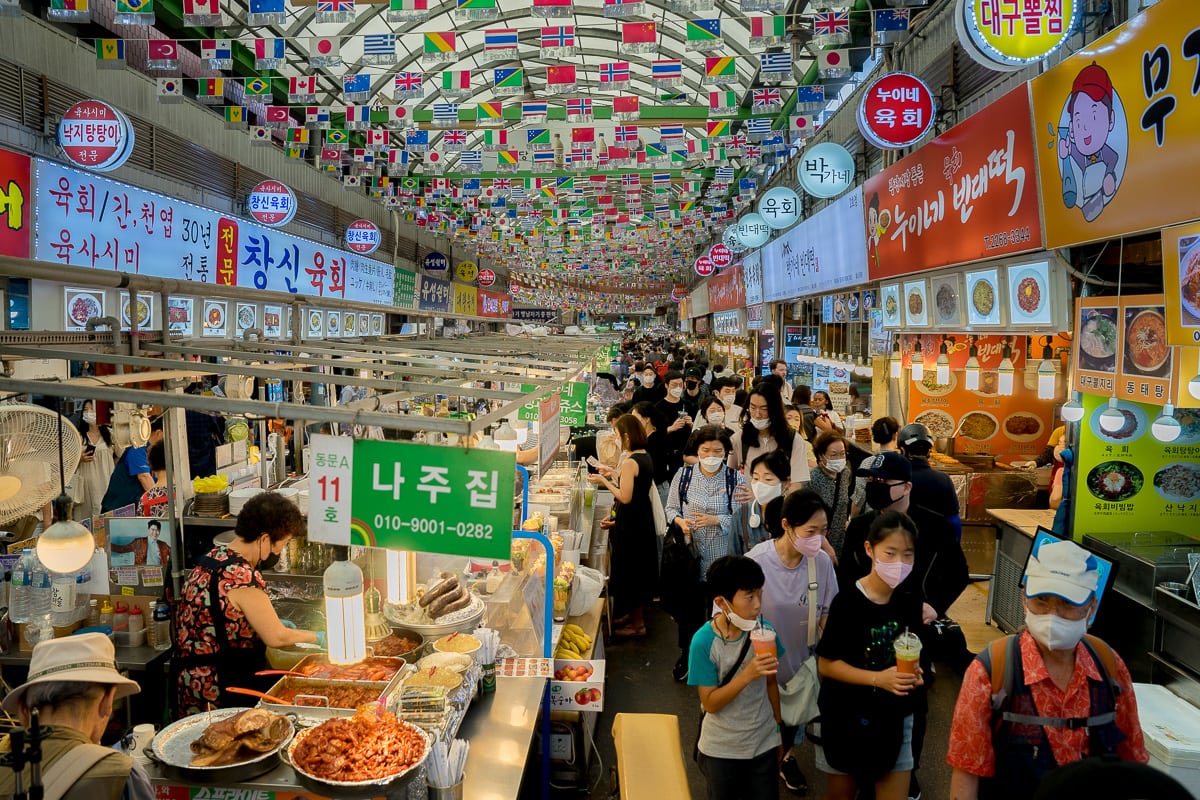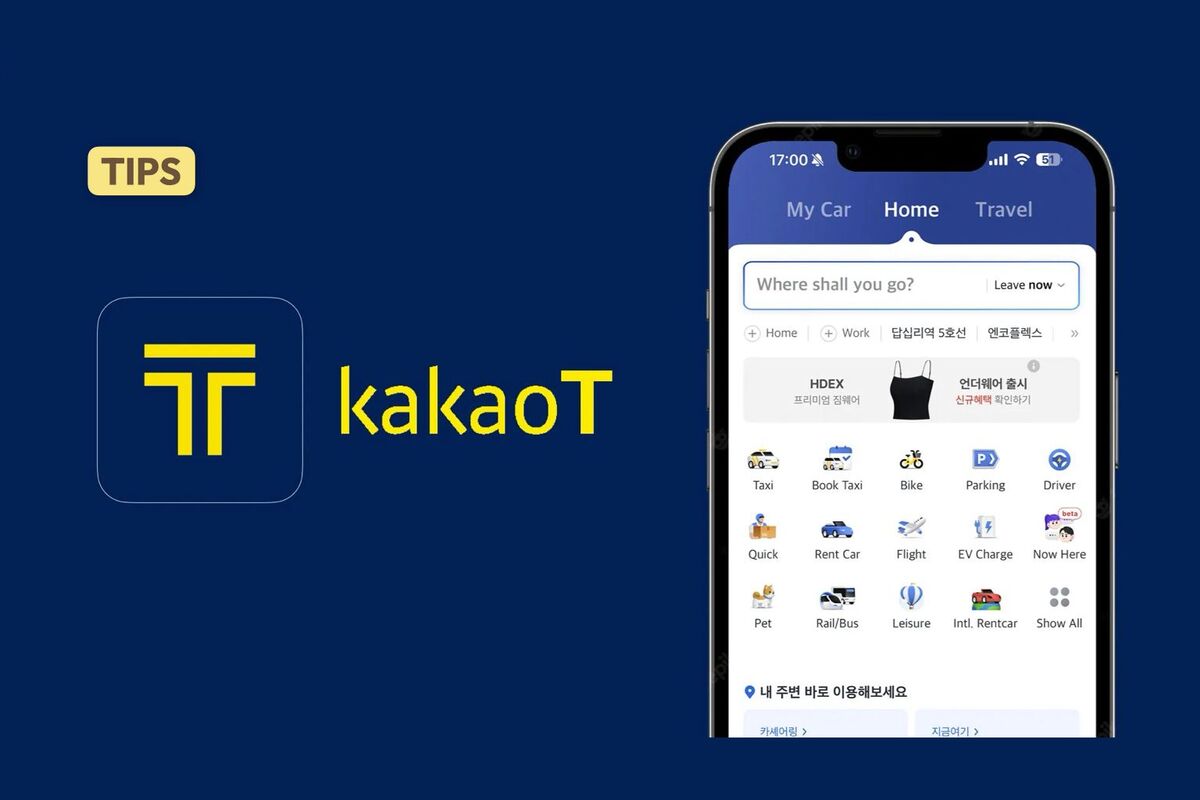A Guide for Digital Nomads: The Cost Of Living In South Korea
South Korea is becoming a rising star on the global digital nomad map. With its blend of tech-driven cities, strong infrastructure, and deep cultural roots, it surely offers a different kind of base for remote workers - one that’s fast, clean, and connected.
But how much does it actually cost to live here? If you're eyeing Seoul, Jeju Island, or Busan, this guide breaks down the real cost of living in South Korea, from housing and food to transport, healthcare, and internet. However, keep in mind that prices and policies may change over time, so always double-check the latest information before making any plans.
Housing: What You’ll Pay and Where to Look
Let’s start with the basics - where would you live? All of the prices below will be stated in South Korean won, so keep your calculator close.
Housing costs vary widely depending on where you stay. Seoul is the most expensive, especially in areas like Gangnam district or near Yeouido Park, where a one-bedroom apartment ranges from ₩900,000 to ₩1.2 million per month. However, these neighborhoods offer excellent subway access, plenty of restaurants and cafes, and proximity to coworking spaces - but you pay for the convenience.
Busan offers better value at ₩600,000–₩800,000, and quieter places like Jeju Island start around ₩500,000. Jeju in particular is ideal for those looking to work in a peaceful, nature-rich environment, though options for furnished rentals may be more limited.
Most rentals follow the wolse system, where you pay monthly rent plus a refundable deposit of two to three months' rent. This is more flexible than the traditional jeonse system, which requires a large lump-sum deposit but no monthly rent. Jeonse isn't practical for digital nomads unless you're staying long-term and have the capital to lock up.
Short-term stays are best handled through Airbnb, serviced officetels, or digital-nomad-oriented coliving spaces. Many come furnished and include utilities and Wi-Fi, simplifying setup.
When budgeting for housing, keep in mind that utilities (electricity, water, gas) may or may not be included. Ask your landlord or agency in advance and be prepared to pay ₩100,000–₩200,000 per month on top of rent.
Food: Eating Out vs Cooking In

Now, the next question is where would you eat?
As you’ve probably heard already, South Korea offers one of the best food scenes in Asia - and it doesn’t have to break the bank. You can eat out regularly without overspending, especially if you stick to casual eateries and local dishes. Eating is a huge part of Korean social life, so even locals dine out frequently.
Here’s what to expect:
- Local meals like kimchi stew, gimbap, or bibimbap: ₩4,000–₩10,000
- Korean BBQ: ₩20,000–₩30,000 per person
- Coffee at a modern café: ₩4,000–₩6,000
- Weekly groceries for one person: ₩60,000–₩100,000
For groceries, visit street markets for affordable fruits, vegetables, tofu, and rice. Supermarkets are more convenient but usually pricier, and imported goods (like cheese, cereal, or wine) carry a significant markup.
Cooking at home is doable, though many apartments have compact kitchens that aren’t ideal for elaborate meals. Many nomads take a hybrid approach: cooking breakfast and lunch at home, then dining out for dinner. Convenience store meals are another budget-friendly option for when you're short on time.
In general, eating out is not only affordable but also a cultural experience. From street food stalls to traditional hanok-style restaurants, there's always something new to try. Embracing Korean food culture can make a big difference in keeping your food budget reasonable.
Transportation: Public Transit and Intercity Travel
Okay, now how do you get from place to place as a nomad?
Well, Korea’s got your back with this one! Their public transportation system is world-class. It doesn't matter if you're commuting across Seoul or taking a weekend trip to another city, getting around is affordable, convenient, and fast.
The subway and bus systems in major cities are well integrated. A single ride on the Seoul Metro costs around ₩1,250, and you can save by using a T-Money card. This reloadable transit card works on subways, buses, and even some taxis. You can pick one up at Incheon Airport or any convenience store.
Taxis are widely available and inexpensive compared to other countries. The base fare is about ₩4,800, and you can use Kakao Taxi (a local ride-hailing app) to book rides without language issues. The app works similarly to Uber and accepts card payments.

For longer distances, Korea’s KTX high-speed rail makes it easy to explore. Seoul to Busan takes under three hours and costs about ₩64,000 one way. This makes weekend trips and multi-city exploration extremely doable.
Navigation is seamless thanks to Korea’s local mapping apps. Google Maps is limited, so download Naver Map or KakaoMap for more accurate directions, transit info, and even walking routes. Overall, you can expect to spend under ₩80,000 per month on transit.
Internet, Workspaces & Mobile Setup
We still have to discuss work-related things, sadly.
Fast internet and quality workspaces are essential for remote workers, and Korea excels in both areas. With some of the fastest internet speeds in the world, you won’t have to worry about laggy video calls or slow uploads. Even smaller towns have reliable connections.
Most rentals come with fiber internet included, or you can get your own plan for about ₩30,000–₩50,000 per month. Mobile data plans are equally strong, with unlimited 5G options starting around ₩50,000. Prepaid SIMs and eSIMs are also widely available if you’re not ready to commit to a long-term contract. Getting a Korean phone number is usually easy with just your passport and visa.
Coworking spaces are everywhere in Seoul. You’ll find them in areas like Hongdae, Itaewon, and Gangnam, offering hot desks, private rooms, and communal lounges. Day passes cost ₩10,000–₩15,000, and monthly memberships range from ₩120,000 to ₩280,000 depending on location and amenities.
In Busan, coworking options are growing, while Jeju Island has fewer dedicated spaces but compensates with work-friendly cafes and coliving programs. Many nomads switch between cafes and coworking spots to stay productive while enjoying new surroundings.
Healthcare: Modern and Accessible

South Korea’s healthcare system is highly rated, offering excellent quality at relatively low prices. No matter if you're staying short-term or for a full year on a Workation Visa, you'll have access to modern facilities, efficient service, and affordable treatments.
If you stay more than six months, you'll need to enroll in the national health insurance system. Monthly premiums average ₩100,000–₩130,000 and cover about 70% of medical expenses. This includes doctor visits, prescriptions, and some dental or vision care.
Without insurance, healthcare is still affordable by Western standards. A simple clinic visit costs around ₩20,000–₩40,000. Pharmacies are everywhere, and many medications that require prescriptions in other countries are available over the counter here.
For short-term stays, be sure to get travel insurance or private health insurance that covers South Korea. Most major hospitals in Seoul and Busan have international clinics with English-speaking staff. Booking appointments is easy, and wait times are usually short.
Korea’s healthcare system is one of the reasons it’s such an attractive destination for remote workers. You can focus on your job and lifestyle knowing that medical help is never far away or unaffordable.
The Workation Visa: Your Digital Nomad Gateway
In 2024, South Korea officially launched its Digital Nomad Visa, known as the Workation Visa. This move opened up long-term residency options for remote workers, freelancers, and entrepreneurs looking to live in the country for up to one year (with the option to extend).
To qualify, applicants must:
- Be at least 18 years old
- Have at least one year of experience in their field
- Earn around ₩88 million KRW per year
- Provide proof of travel insurance with at least ₩100 million KRW in coverage
You must work for foreign clients or companies - no local employment is allowed. Applications can be submitted at a Korean embassy abroad or through immigration offices within the country.
The Workation Visa is a big step forward for Korea, which previously lacked any kind of long-term remote work option. It gives digital nomads legal status and access to local services like bank accounts, rentals, and health insurance. Families can also apply to bring dependents, making it one of the more inclusive nomad visa programs globally.
Additional Costs and Lifestyle Factors
Before or upon arrival, you'll also want to exchange or purchase South Korean currency - the Korean won (KRW). You can do this at major international airports like Incheon Airport, but better rates are often found at local banks or authorized currency exchange centers in the city. If you're arriving with USD or EUR, exchanging a small amount at the airport for transit, then making a larger exchange in the city is a common strategy.
Beyond the main expenses, there are a few extras to factor into your monthly budget. Utilities (gas, electricity, water, internet) typically cost between ₩100,000 and ₩200,000 per month depending on your apartment and usage.
A decent mobile plan for your Korean phone number runs about ₩30,000–₩60,000 monthly. You’ll also want to budget for leisure: museum tickets, gym memberships, or weekend getaways by train or plane. Domestic flights are affordable, and many digital nomads use weekends to explore other cities.
Air quality can fluctuate during the spring, so consider getting an air purifier, especially if you're sensitive. Google Maps works in Korea, but Naver Map is more accurate for public transport and walking routes.
If you're relocating with children, be aware that tuition at an international school can be expensive, ranging from ₩20 million to ₩40 million KRW per year. For solo nomads, the local community is growing fast. Join coworking meetups, online groups, or events to plug into Korea’s expanding nomad ecosystem.
Is South Korea Worth It for Digital Nomads?
So, do you think it’s worth it?
The cost of living in South Korea for digital nomads falls between ₩1.5 million and ₩2.5 million KRW per month, depending on your lifestyle and location. It's more expensive than Southeast Asia but offers far more in terms of infrastructure, healthcare, and overall quality of life.
For those looking to live in a fast-moving, modern society with deep cultural roots and strong digital infrastructure, South Korea is a smart, exciting choice. Thanks to the new Workation Visa, the country is now more accessible than ever to global remote workers.
If you're ready to explore a new kind of digital nomad experience, South Korea just might be your next home base.
Ready to buy?
Are you ready to buy your currency? Stop waiting and request a Shipping Kit. We will provide everything you need to ship and receive funds for currencies you own.


